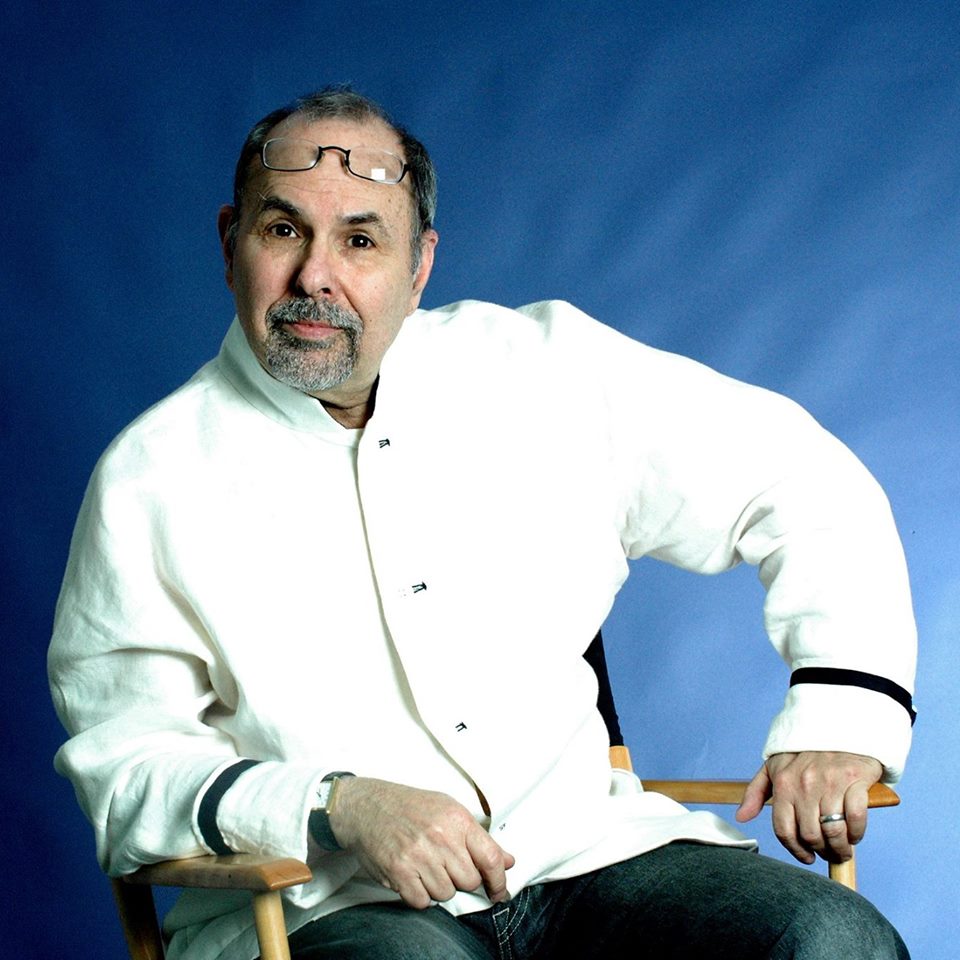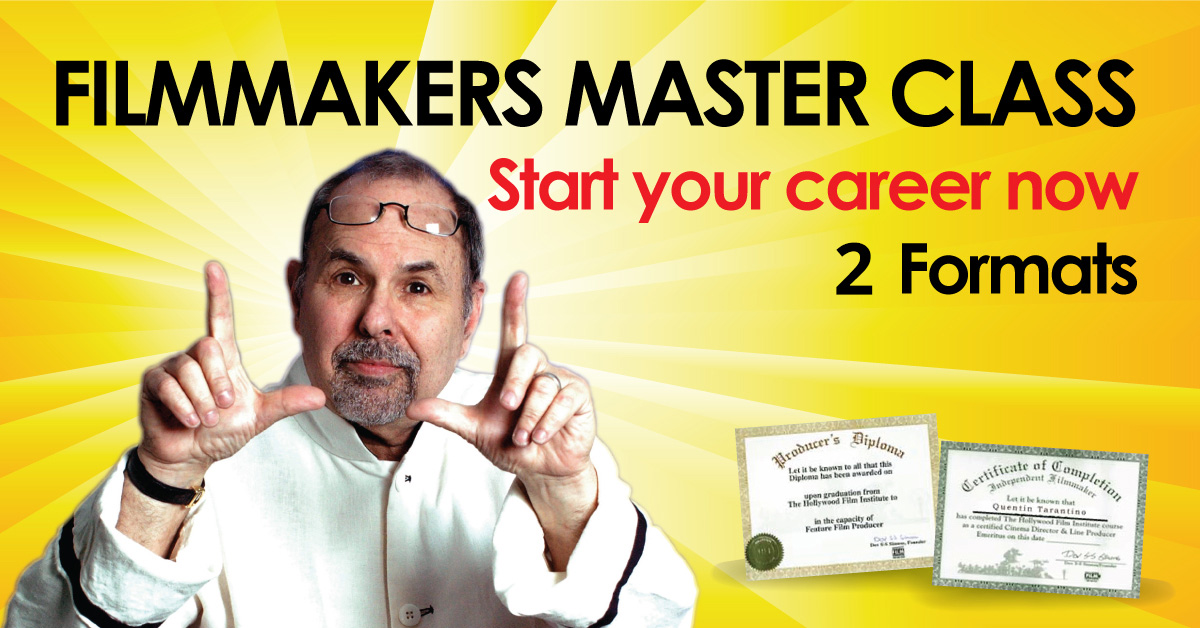GOT AN IDEA. WRITE A TREATMENT. (Get a $1,000,000 Offer… Learn How.)
by Dov S-S Simens on April 3, 2017
GOT A MOVIE IDEA! BE CAREFUL.
Movie ideas are a dime-a-dozen and your sure that yours is worth a million bucks…
And “Yes great movie ideas are rare.”
But beware, even if you have a great idea, an unbelievable variation of one of Shakespeare’s “20 Master Plots” or an amazing twist on Joseph Campbell’s “The Heros Journey” (superb storytelling books you can obtain at the WritersStore.com)… Always remember, “No one, no matter how great and how unique the thought might be… owns an idea.”
 (“You cannot own an idea. But a Treatment, based on your idea, is something you can own & sell.”)
(“You cannot own an idea. But a Treatment, based on your idea, is something you can own & sell.”)
Lets assume you have the great idea. And you tell it to someone.
Uh-Oh. You screwed up.
Why?
Because now the person, you just told it to can make it without you, for all you had was an idea, which you don’t own and just gave it (told it) to someone for free.
Not smart.
Again, “No one owns an idea”. So what do you do?
Simple, take the idea and make it into something that you own… And this something is called a “Treatment”.
Thus, whenever you get an idea, type 3-5 pages, put on a title page, title it a Treatment-For-Feature Film, register it with the Writers Guild of America ($25) and now… it is no longer an idea… it is a thing (a Treatment) that you own with a date (the day you spent $25) proving when you created it.
WRITE A TREATMENT
Writing a Treatment is very-very-very easy. And, once it’s written you graduated from having a thought to having something tangible (3-5 page Treatment), based on your idea, that is protectable, because you have the Date-of-Registration as “PROOF OF CREATION” that has merit in a court-of-law.
 (“It only takes 2-3 hours to type 3-5 pages and own a Treatment.”)
(“It only takes 2-3 hours to type 3-5 pages and own a Treatment.”)
So, let’s write a 3-5 page Treatment.
FIRST QUESTION: Can a Treatment be longer than 3-5 pages? Of course it can! But, start with 3 pages, and while writing if it becomes 4 pages “Fine”, 5 pages “Fine”, 7-10 pages “Fine”, 15 pages “Fine”, 20 pages “Fine”, 30 pages… “Enough. Enough. Enough. This is starting to become a bloody short-story or a novel”…
…3-5 pages is enough, 5-7 pages is better, 7-9 pages is even better….if detailed. But you’re not dazzling Hollywood when you state “You’ve written a 75 page Treatment”.
For, while reading it, if at any time, the reader becomes bored he/she bins-it.
Again, no one is dazzled with a lot of pages.
Thus, let’s take your idea, which you don’t own, and write a 3-5 page Treatment, which you will own.
SECOND QUESTION: What format do I type? Answer is “not script format going down-the-page with He-Says She-Says, stating via dialogue “what’s happening”, with a little exposition but simple prose format, going left-to-right with adjectives & adverbs describing “what’s happening”.
IMPORTANT POINT: When you type a Treatment it is DOUBLE SPACE, not single space and that’s half the line/page, which means this 3-5 page Treatment is really only 1-2 pages of single space typing…and if you can’t do this; then get the heck out of Hollywood and go to Med School…the world needs more pro-bono, non-greedy, doctors not more filmmaker-dreamers with no work ethics.
Now, write your 3-5 page Treatment outlining the 3 Act Structure.
WHAT IS 3 ACT STRUCTURE?
THIRD QUESTION: Everyone says that movies (aka: scripts) have a ‘3 Act Structure’. Ok, but “what the f*ck do they mean by that?”
I’ve seen a lot of movies and have never seen anything on the screen typed, ACT I, then 25-30 minutes later, the curtain closes & opens, and I see typed, ACT II, then 25-30 minutes later the curtain closes & opens, and I see ACT III.
So, again…“What the f*ck do they mean by a 3 Act Structure?”
Simple. Everything has a BEGINNING (aka: Act I), a MIDDLE (aka: Act II) and an ENDING (aka: Act III).
So let’s write a Treatment and begin with 3 blank pages.
 (“The 3 Acts are the Beginning, Middle & End. Beginning & End are simple but what is difficult is the Middle.”)
(“The 3 Acts are the Beginning, Middle & End. Beginning & End are simple but what is difficult is the Middle.”)
Any idea, what you are going to call the 1st blank page?
Duh! ACT I.
Any idea, what you are going to call the 2nd blank page?
Duh! ACT II.
Any idea, what you are going to call the 3rd blank page?
Duh! ACT III.
In the Beginning (Act I) you set up (aka: introduce) everything and everyone.
In the Ending (Act III) you resolve everything.
In the Middle (Act II) you tell the story of how the protagonist got from Act I to Act III.
The key is Act II. It is ACT II that is the problem. ACT II is tough to write. Just about every movie I’ve ever seen (try it yourself), I always like the first 5-7 minutes (Act I) and the last 3-4 minutes (Act III), but it is always the big middle (Act II) where I get bored.
 (“In the next post, and in my DVD & Streaming Film School, I clearly detail how to structure anxd write a great ACT II.”
(“In the next post, and in my DVD & Streaming Film School, I clearly detail how to structure anxd write a great ACT II.”
Also, the 3 Acts are not equal in space or time.
With a 90-page screenplay Act I is not pages 1-30; Act II is not pages 31-60 and Act III is not pages 61-90.
In actuality, Act I (The Beginning), with a 90-page script, is very short maybe 5-7 or 7-10 pages and Act III (The Ending) is even shorter with just 3-5 or 5-7 pages.
Thus, in writing a 3-Page treatment allocate the upper half (space-wise) of Page 1 for Act I (The Beginning) and the bottom half (space-wise) of Page 3 for Act III (The Ending).
Now, for ACT I (half of Page 1) with 3-4 long, grammatically incorrect sentences stating (A) The GOOD GUY, (B) The BAD GUY, (C) The SETTING, (D) The SITUATION & (E) The CONFLICT….
Plus, each time you introduce a new character (A) type his/her name in ALL Upper Case letters (Why? It tells the reader “new person”), & after introduced (All Caps) when you type the character’s name again, now just type in Upper & Lower Case letters; then (B) state his/her age; then (C) give a 7-12 word visualization (“immigrant with dreams of riches”; “hooker with a heart of gold”; “salesman that can sell air conditioners to Eskimos”; at the least “a Tom Hanks Forest Gump type of character”.
This is ACT I. It takes only half of Page 1.
Now, go to the bottom half of Page 3 and write Act III.
WHAT IS ACT III?
Act III is a professorial phrase for “The Ending”… Do you think the ending is just going to appear to you between pages 15-80?
Write the bloody ending. Remember, “It can change”. But you must conceptualize and ending, so you can create Act II, a roadmap for how your protagonist(s) gets from Act I to Act III.
You now have written the Upper-Half of Page-1 (ACT I: The Beginning) and the Bottom-Half of Page-3 (ACT III: The Ending).
Your next step is to visualize the tough one…ACT II (The Big Middle, the actual story) which in typing is the Bottom-Half of Page-1, all of Page-2 and the Upper-Half of Page-3.
WHAT ABOUT ACT II?
 (“My DVD FILM SCHOOL at $249 and STREAMING FILM SCHOOL at $149 are the cheapest and best film education tools in the world…. www.WebFilmSchool.com”)
(“My DVD FILM SCHOOL at $249 and STREAMING FILM SCHOOL at $149 are the cheapest and best film education tools in the world…. www.WebFilmSchool.com”)
ACT II, is what writing instructors call “structure” and talk professorial about things like plot points, crisis, resolution, twists, back stories, sub-plots, emotional involvements, character development, goals, desires, journeys, etc.
Again, writing instructors call this “structure”.
Syd Field called it a ‘Paradigm’, John Truby calls it Building Blocks, who the heck knows what McKee calls it or what Shakespeare or Chaucer called it… Now, are you ready for what I call it?
It’s the Roller Coaster ride… the Ups & Downs.
You introduce (A) The Boy, then (B) The Girl, then (C) The desire, then (D) The Action, then (E) The Problem….etc.
The Rollar Coaster Ride, which I call (“get ready”), the 5 UH-OHS, 5 OH-SHITS & 1 OH-MY-GOD.
This is a total of 11 scenes.
It is my strong belief that every movie has “5 UH-OHS, 5 OH-SHITS & 1 OH-MY-GOD” scenes, 11 scenes that comprise Act II with the roller coaster ride that makes it a story.
3-PAGE TREATMENT
So, to write a 3-Page Treatment. First, WRITE “ACT I” (Top Half of Page-1), then WRITE “ACT III” (Bottom Half of Page-3); then plot the 5 UH-OHS, 5 OH-SHITS & 1 OH-MY-GOD, then WRITE “ACT II” (Bottom Half of Page-1, Top Half of Page 3 and all of Page 2).
Finish with a title page and with $25 go to the Writer’s Guild of America (WGA.org) and register it….
Congratulations…you just wrote and registered a Treatment…and not only own something but can prove the exact date that you created it.
However, don’t get too cocky for you own something, a Treatment, but the Treatment needs to be fleshed out more if you are to write a screenplay that is to be sold for $1,000,000.
Your next step, a follow-up No-Bull Blog, will be to take the 7-11 scenes established in your Treatment and flesh it to 40-60 scenes with the A-Story, 3 B-Stories and Back Stories, all intertwined into a satisfying ending and epilogue, which is called a “BEAT SHEET”.
Once you have a “BEAT SHEET” you can write a Great Script in 3-weeks typing 5-minutes/day.
THE $1,000,000 SALE.
Lets get to the million dollars and assume that you have the Treatment. A great idea, with a great Act I and a great Act III along with an amazing ACT II, registered and copyrighted, and are ready to sell it to a production company that has a development deal with a movie studio.
The sale (aka: Purchase Agreement) is actually going to be called an Option Agreement with the major deal points being Purchase Price, Option Price, Option Period, Renewal Periods and Payment Schedules”
 (“An Option Agreement has 5 major Deal Memo points (A) Purchase Price, (B) Option Price, (C) Option Time Period, (D) Renewal Periods and (E) Payment Schedule.”)
(“An Option Agreement has 5 major Deal Memo points (A) Purchase Price, (B) Option Price, (C) Option Time Period, (D) Renewal Periods and (E) Payment Schedule.”)
Let’s run the major Purchase Agreement points again…
(A) PURCHASE PRICE: $1,000,000
(B) OPTION PRICE: $1,000
(C) OPTION PERIOD: 12-18 Months
(D) RENEWAL PERIODS: 2 at 6-Months each, for an additional $1,000
(E) PAYMENT SCHEDULE: Option, First Draft, Polish, Re-Write, Final Draft, Principal Photography, Distribution, Revenues…
And if the treatment never becomes a script, that secures the financing, that becomes a movie, that gets distributed and shows profits and you only got $1K, for the film never got made, you will market for the rest of your life that you “Sold an idea to Hollywood for $1,000,000”.
Don’t get depressed for in my Film School Programs, and further posts, I’ll teach how to get a better sale, more money upfront, a shorter option period, a paid writing assignment (wga minimum) for two drafts, and how to secure a percentage of Box Office Gross and Net Producer Profits once the film, based on your idea gets made and distributed.
Welcome to Hollywood…
Dov Simens
XXXXXX
20-HOUR (Live, DVD or On-Demand) FILM SCHOOL
Want facts not theory… Then my Film Schools ($89-$389) are perfect.
Enroll. Graduate. Write. Produce. Direct.
Next “HOLLYWOOD (2-Day) FILM SCHOOL” sessions are April 8-9, 2017 or August 19-20, 2017.
Keep Up to date…
Join our e-mail list.
http://webfilmschool.us10.list-manage.com/subscribe/post?u=313d0b336735c6d5fbf1a8e9d&id=2c55446523









Are you really going to teach the roller coaster ride? You gonna take my money, hold my fucking hand and walk me through my complicated fucked-up story of two different worlds slamming into each other, you gonna do that are you? And sell the idea/unicorn of a back end? We gonna nail page 1? You got it figured down to the beat sheet? The 50 point outline? A story and B story? Hey Green Beret you ever jump out of an H-3 trying to save an Naval Aviator? This screenwriting not some fucking game. One thing you have right is you get one shot and that’s it. Great or Suck…so this is how you make a living? I’m a writer in the drink drowning and you your selling anchors?
wtf dood
where did that come from
you selling a different course and putting down the competition or what
Why registration with the Writer’s Guild isn’t the best option. Yes, I know that they’re convenient. But, what if you have to go to court? The Guild might be able to explain how your treatment was maintained and that’s a good thing. But, you’ll probably have a difficult time finding an attorney to handle your case unless you’re prepared to spend a lot of money defending your idea. Why? There’s no money in it. Copyright law 17 U.S. Code, “In any civil action under this title, the court in its discretion may allow the recovery of full costs by or against any party other than the United States or an officer thereof. Except as otherwise provided by this title, the court may also award a reasonable attorney’s fee to the prevailing party as part of the costs.
(Pub. L. 94–553, title I, § 101, Oct. 19, 1976, 90 Stat. 2586.)”
So, register with the Writer’s Guild and you won’t be able to recover your attorney fees or receive punitive damages because your work isn’t covered under the law. Only works registered with the Registrar of Copyrights are eligible for attorney’s fees and punitive damages. Ergo, register your work with the Registrar of Copyrights. You can do it online. It only cost a few bucks more and you’re protected.
Great idea. I might just do that
That was wonderful.
Appreciate the straightforward guide on creating a treatment and the importance of registering it. Looking forward to the follow up on turning these scenes into a comprehensive beat sheet.
Professional Remodeling Contractors in Meredith NH